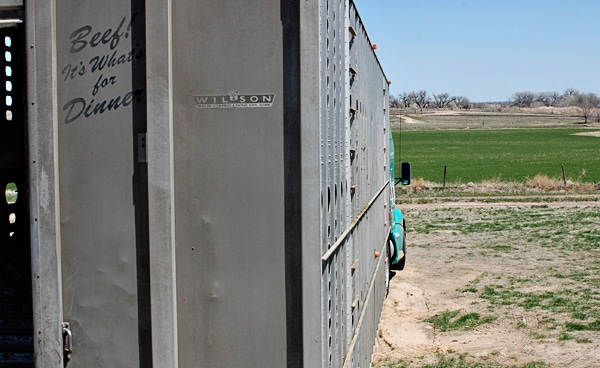COVID-19: Early estimates of economic impact hard to pin down
While losses in the cattle sector aren’t yet definitive, here are some early estimates on how a coronavirus-dominated market is shaping up.
April 23, 2020

Economic losses associated with COVID-19 and the subsequent global recession are impossible to calculate. The pandemic continues and the U.S. economy has yet to begin reopening. Never mind the global economy or the demand creation and destruction in specific industries.
Estimating such losses, even as the event unfolds, is necessary though, if only to get a firmer handle on the questions that need to be asked.
“The objective is not to provide definitive estimates of impacts, but to identify some key issues and help readers develop some notion of the rough magnitudes of possible effects,” say economists with the Food and Agricultural Policy Research Institute (FAPRI) and the Agricultural Markets and Policy (AMAP) team at the University of Missouri (MU), in the recent publication: Early Estimates of the Impacts of COVID-19 on U.S. Agricultural Commodity Markets, Farm Income and Government Outlays (COVID-EEI).
Broadly, FAPRI and AMAP economists estimate net farm income this year will decline by about $20 billion, compared to what is termed the Phase One baseline estimate made in the U.S. Agricultural Outlook, (USAO) published in March. The Phase One scenario estimated total net farm income in 2020 at $105.91 billion, which was $7 billion more optimistic than a scenario assuming no impact from the trade deal.
FAPRI and AMAP provide the USAO 10-year baseline projections each year, providing ranchers, farmers, agribusinesses, policymakers and the public an overview of the state of the U.S. farm economy.
Up front, according to the COVID-EEI, “This analysis is both preliminary and highly uncertain given the constantly evolving market conditions. The analysis considers only some of the ways in which COVID-19 may affect markets and is based on a series of assumptions, many of which may be overtaken by events.”
You can see the macroeconomic assumptions in Figure 1.
“The eventual impact of COVID-19 on the economy depends critically on the length and intensity of the pandemic,” say MU economists. “The key macroeconomic assumptions made in this analysis represent a sharp and significant decline in the national economy in 2020, with the sharpest decline occurring in the second quarter.
![jAMIE_20[2].jpg jAMIE_20[2].jpg](https://eu-images.contentstack.com/v3/assets/blt4175b16074920322/blt72336fa77b933f7a/6485e692f660d96c7a747763/jAMIE_20_5B2_5D.jpg?width=700&auto=webp&quality=80&disable=upscale)
“The scenario assumes a v-shaped recession where the market recovers quickly. Such an outcome is probably contingent on a rapid end to the public health crisis and to current restrictions on economic activity.
“While it may not be fair to characterize this as a best-case scenario, worse outcomes are certainly possible. If COVID-19 continues to disrupt economic activity through 2020 and into 2021, the recession could be far deeper and last longer.”
Potential cattle price impacts
The COVID-EEI estimates the Five Area fed steer price this year at $108.06 per cwt (Figure 2). That’s $14.04 less (-11.50%) than the USAO Phase One baseline. Total cattle receipts were estimated $9.57 billion less.
A recent, separate study—Economic Damages to the U.S. Beef Cattle Industry Due to COVID-19—pegged economic losses in the cattle industry, stemming from COVID-19, at $13.6 billion. It was conducted by a team of industry-leading agricultural economists led by Derrell Peel, Breedlove Professor of Agribusiness and Extension livestock marketing specialist at Oklahoma State University. The study was commissioned by the NCBA to assist USDA in determining how best to allocate CARES Act relief funds to cattle producers.
Cow-calf producers will be impacted the most, according to the study, with COVID-19-related losses estimated at $3.7 billion, or $111.91 per head for each mature breeding animal in the United States. Without offsetting relief payments, those losses could increase by $135.24 per mature breeding animal, for an additional impact totaling $4.45 billion in the coming years.
Economic losses for stockers and backgrounders were estimated at $159.98 per head, for a total economic impact of $2.5 billion in 2020.
Losses in the cattle feeding sector were estimated at $3.0 billion or $205.96 per head.
Among the highlights from the FAPRI and AMAP report:
Livestock, poultry and dairy producer prices all fall sharply in 2020 in response to weaker consumer demand caused by reduced disposable income.
Supply chain concerns not considered in this analysis could put further downward pressure on producer-level prices for many commodities. In spite of lower fuel prices, farm-to-retail margins may increase for many food items.
Price impacts for crops tend to be larger in 2020-21 than in 2019-20, even though economic recovery is assumed to begin later this year. Most of 2020 crop production was not priced before the onset of the COVID-19 crisis.
The reduction in receipts for livestock producers is partially offset by a decline in production expenses with lower purchased livestock, feed, fuel, interest, and other expenses. Increased government payments also partially offset the decline in receipts.
About the Author(s)
You May Also Like




.png?width=300&auto=webp&quality=80&disable=upscale)
